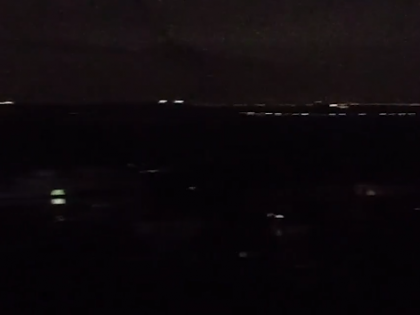Mock Drill in India: Several Cities Observe Blackouts as Part of Civil Defence Exercise (Watch Video)
By Lokmat English Desk | Updated: May 7, 2025 21:41 IST2025-05-07T21:34:41+5:302025-05-07T21:41:12+5:30
Several states observed blackouts on Wednesday as part of nationwide civil defence mock drills ordered by the Ministry of ...

Mock Drill in India: Several Cities Observe Blackouts as Part of Civil Defence Exercise (Watch Video)
Several states observed blackouts on Wednesday as part of nationwide civil defence mock drills ordered by the Ministry of Home Affairs (MHA). The exercise, aimed at testing the country's emergency preparedness, involved scheduled blackouts at key locations. Prominent sites such as Rashtrapati Bhavan, Vijay Chowk in Delhi, and Raj Bhavan in Patna had their lights switched off as part of the drills. Other participating cities included Barmer in Rajasthan, Gwalior in Madhya Pradesh, Surat in Gujarat, Shimla in Himachal Pradesh, and Patna in Bihar. The exercise also involved blackout drills in major cities like Delhi, Mumbai, Pune, Bengaluru, Gwalior, and Jaipur to evaluate local response to security challenges.
#WATCH | Bihar: Blackout in Patna, as seen from BISCOMAUN Bhawan, as part of the mock drill ordered by the MHA. pic.twitter.com/8S4zIPvdo9
— ANI (@ANI) May 7, 2025
#WATCH | Bihar: Blackout in Patna, as seen from BISCOMAUN Bhawan, as part of the mock drill ordered by the MHA. pic.twitter.com/8S4zIPvdo9
— ANI (@ANI) May 7, 2025
#WATCH | Madhya Pradesh: Blackout in Gwalior, as part of the mock drill ordered by the MHA. pic.twitter.com/gn4Vtu68aS
— ANI (@ANI) May 7, 2025
#WATCH | Blackout in Akshardham area of Delhi, as part of the mock drill ordered by the MHA. pic.twitter.com/lTyO9ZTXr8
— ANI (@ANI) May 7, 2025
#WATCH | Himachal Pradesh: Siren activated in Shimla to indicate people to practice blackout, as part of the mock drill ordered by the MHA. pic.twitter.com/bE2BQQWT00
— ANI (@ANI) May 7, 2025
Maharashtra: A blackout is being observed in Navi Mumbai as part of the nationwide mock drill ordered by the MHA pic.twitter.com/hNNLskANxW
— IANS (@ians_india) May 7, 2025
The civil defence drills came hours after India’s military launched Operation Sindoor in the early hours of Wednesday, targeting terrorist infrastructure in Pakistan and Pakistan-occupied Jammu and Kashmir (PoJK). The operation was a direct response to the April 22 terror attack in Pahalgam, Jammu and Kashmir, which claimed the lives of 26 civilians, including one Nepali national.
During a media briefing in the national capital, Foreign Secretary Vikram Misri, Colonel Sofiya Qureshi, and Wing Commander Vyomika Singh provided details of Operation Sindoor. Wing Commander Singh explained that the operation aimed to deliver justice to the victims of the Pahalgam attack and their families. Nine terror camps were successfully destroyed during the operation.
Singh emphasized that the targets were chosen carefully to ensure there was no damage to civilian infrastructure or loss of life. "The locations were selected to avoid damage to civilian infrastructures and loss of any civilian lives," she said.
Read Also | Five Flights from Pune Airport Cancelled After 'Operation Sindoor'
Colonel Qureshi showed videos of the destruction of terror camps, including those in Muridke, where the perpetrators of the 2008 Mumbai attacks, David Headley and Ajmal Kasab, had received training. Other camps targeted included Sarjal in Sialkot, Markaz Ahle Hadith, Barnala, Markaz Abbas in Kotli, and Mehmoona Joya in Sialkot.
Foreign Secretary Misri stated that the attack in Pahalgam was designed to destabilize the return of normalcy in Jammu and Kashmir. "The attack in Pahalgam was marked with extreme barbarity, with the victims mostly killed with head shots at close range in front of their family," Misri said. He added that the attack aimed to undermine peace efforts in the region.
India’s strikes mark the deepest military action inside Pakistan’s territory since 1971. The successful targeting of terror camps in Pakistan and PoJK represents the most significant military operation conducted by India in over five decades.
(With inputs from agencies)
Open in app